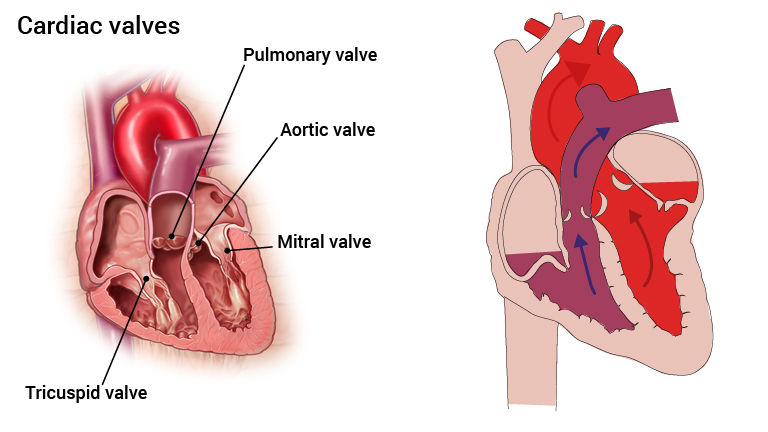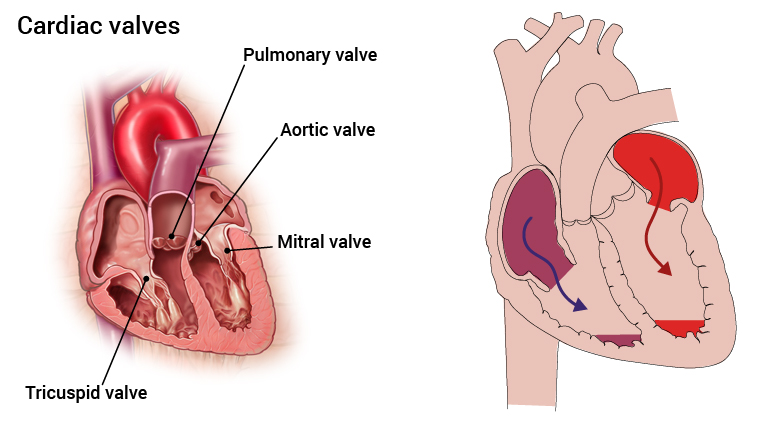In order to form a picture of how the blood is transported through the heart (and body in general), it is important to know the name and function of several of the body’s blood vessels.
There are 3 main types of blood vessel:
- arteries, lead blood away from the heart to the body’s various tissues
- veins, lead blood from the body’s various tissues to the heart
- capillaries, lie within the body’s various tissues and is the link between arteries and veins.
The blood returning to the heart from the body’s tissues, arrive via the inferior and superior vena cava respectively, into the right atrium. From the right atrium blood goes to the right ventricle. When the heart is contracting, this blood is forced through the pulmonary trunk to the lungs. In the lungs the blood disposes of carbon dioxide and takes up oxygen (see details in the respiratory physiology E-compendium). From the lungs, blood returns to the left atrium through the four pulmonary veins, two from the left and two from the right lung. From the left atrium the blood flows to the left ventricle. From the left ventricle blood is pumped out through the aorta (main artery), to the body.
It is important to note that the inferior vena cava returns blood from organs located posterior to the heart, while the superior vena cava returns blood from the organs located above (superior), the heart. Note also that both these veins are collectively referred to as the vena cava.
The blood circulation from the heart to the lungs and back to the heart is generally called the pulmonary circulation, while the circulation of the blood from the heart through the aorta, to the body’s tissues, and back via the vena cava, is called the systemic circulation.









